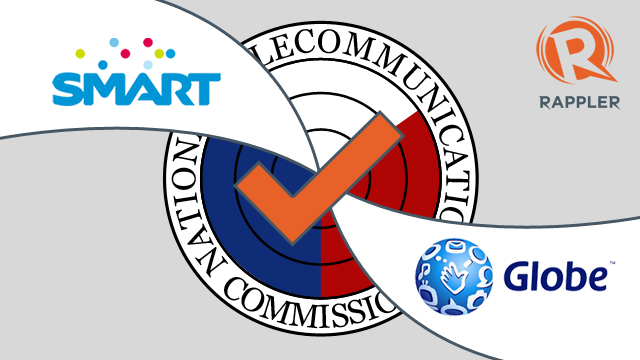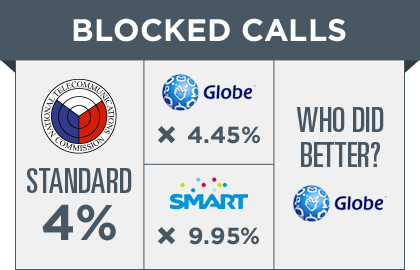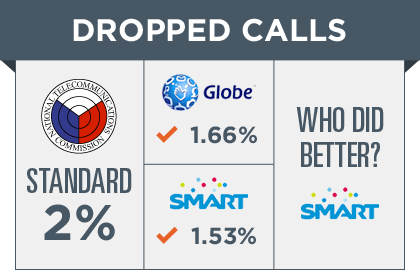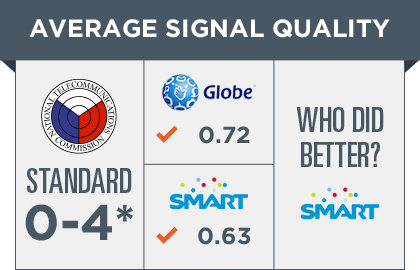SUMMARY
This is AI generated summarization, which may have errors. For context, always refer to the full article.

MANILA, Philippines – Who is the better performing telco?
In press releases on Thursday, September 20, mobile giants Globe Telecom and Smart Communications lashed out at each other over the results of a recent network benchmark test conducted by the National Telecommunications Commission (NTC).
The purpose of the tests, according to the NTC’s own press release, is to measure network performance based on existing NTC-prescribed minimum service performance standards. The tests were conducted by the NTC in the National Capital Region.
Telcos were graded on 5 parameters:
- Blocked Calls or Grade of Service
- Dropped Call Rate
- Average Receive Signal Level
- Average Signal Quality
- Call Set-Up Time
In conducting the test, the monitoring team initiated a total of 1,506 on-net calls per network. The monitoring team made the calls using the “drive test” method (i.e. inside a moving vehicle).
The initiated calls were simultaneously done for Globe and Smart. Sun SIMs, Talk and Text SIMs, Red Mobile SIMs and Touch Mobile SIMs were not used because these SIMs are using the networks of either Globe or Smart.
So how did the telcos fare, and who performed better?
In their press releases, each telco claimed it out-performed the other. Technically, they are both right.
Smart rated higher in 4 of the 5 parameters: dropped call rates, average received signal level, average signal quality, and call set-up time.
But Globe outperformed Smart when it comes to blocked call rates or grade of service. Further, in this parameter, the difference between the performance of both networks is big: 4.45 % for Globe and 9.95 % for Smart, where the NTC’s standard is set at 4 %.
Here are the detailed results:
Test Parameter 1. Blocked Calls or Grade of Service: this refers to the percentage of calls that were not given access by the network.

Test Parameter 2. Dropped Call Rate: this refers to the percentage of on-going calls that were involuntarily terminated.

Test Parameter 3. Average Receive Signal Level: This refers to the signal bar of a subscriber’s handset. It represents the signal strength provided by the serving cellsite to the mobile handset of the subscriber while the conversation is on-going.

Test Parameter 4. Average Signal Quality: This is the quality of voice transmission while a subscriber is using his mobile phones. Quality service means voice transmission is not choppy or garbled.

Test Parameter 5. Call Set-Up Time: This refers to the time required for the network to activate the called party. In simple terms, this refers to the period required from the time a subscriber finished dialing to the time of the first ring.

The monitoring teams conducted tests during the last week of April, May and June 2012 using prepaid Globe and Smart SIM cards subscribing to regular services and not unlimited services.
The mobile phone numbers used and the locations where the tests were conducted were not known to anyone except to the members of the monitoring team.
Read the press releases sent out by the two telcos below:
Read the NTC’s press release here:
Have your say! Who do you think is the better telco? Post your views in the comments box below.
– Rappler.com
Add a comment
How does this make you feel?
There are no comments yet. Add your comment to start the conversation.